Introduction
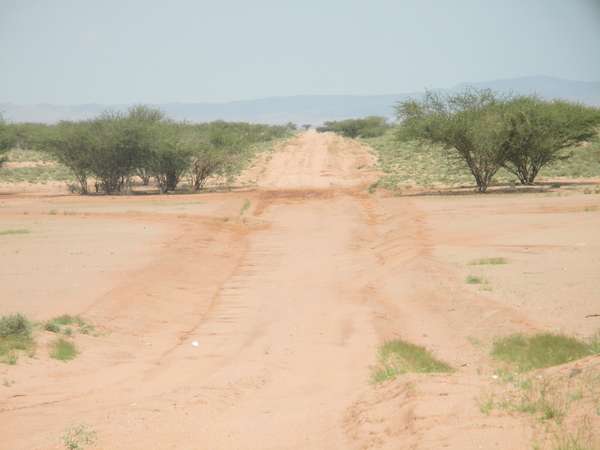
Figure 1. Typical semi-arid landscape in Kenya. Source: Bob Hargrave
It is estimated that drylands occupy 40% of the earth’s surface. And of the world’s population residing in dryland environments, approximately 800 million depend on agriculture. [ICRISAT, n. d.(b); Middleton and Thomas, 1997]
There have been several methods proposed to define drylands; we will use the following:
Drylands are regions where the average annual precipitation is less than 65% of the average annual potential evapotranspiration (an Aridity Index of < 0.65). The FAO Aridity Index is defined as a 30 year average of annual precipitation divided by annual potential evapotranspiration.
Drylands fall in the following climate types as defined by the Aridity Index (AI):
Arid (0.05 < AI < 0.20 - 12.1% of the global land area)
- Sahara desert
- Arabian Peninsula
Semi-arid (0.20 < AI < 0.50 - 17.7% of the global land area)
- The Sahel
- East Africa (Figure 1)
- Eastern Brazil
- Central India
Dry subhumid (0.50 < AI < 0.65 - 9.9% of the global land area)
- Transition zone between Sahel and rainforest
- Eastern India
- Precipitation (P)
- is rainfall.
- Evaporation (E)
- is water lost directly from soil, plant and other surfaces directly to the atmosphere.
- Transpiration (T)
- is the loss of water to the atmosphere that has been transported from the soil through the plant.
- Evapotranspiration (ET)
- is the total loss of water through evaporation and transpiration.
- Potential Evapotranspiration (PET)
- is an estimate of actual evapotranspiration using some or all of the recorded temperature, wind, daylength, solar radiation, and other data.
Therefore the Aridity Index (AI) = P/PET averaged over 30 years.
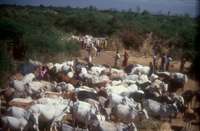
Figure 2. Small East African Zebu are herded by pastoralists in Northern Kenya.
Source: Bob Hargrave
Arid and semi-arid lands are predominately the domain of pastoralists (Figure 2). Nomadic and semi-nomadic herding is the main agricultural activity. The exceptions are areas with good access to irrigation.
The dry subhumid areas, without irrigation, are marginal for maize. The main grain crops grown in these areas are sorghum and millet varieties. Other arid or semi-arid staple crops include cassava, cotton, sesame, and sunflower (for oil).
These climate classifications are useful on a broad scale, but it is important to recognize that there can be significant annual variations in rainfall. These variations can create conditions that differ from long term averages for that area. For example, rainfed crops will thrive in a wet year in a semi-arid climate and fail in a dry year in a sub-humid climate. Also, a drought year without the expected rains in semi-arid areas is devastating for pastoralists.
These annual variations are becoming more frequent with climate change and may result in long-term shifts in the climate classification of some areas of the world. At the very least it is becoming more difficult for farmers in marginal areas to adapt to annual variations.
Problem
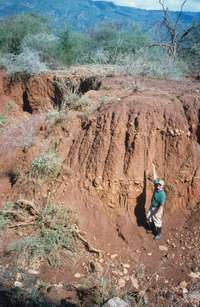
Figure 3. Overgrazing and cutting trees leads to serious erosion in the Kerio Valley of Kenya. Source: Bob Hargrave
Thriving and even surviving in dryland climates has always been a challenge. Similarly, yearly rainfall has always been variable with droughts and floods occurring regularly for millennia. But with gradual climate change, yearly rainfall variation and frequency of droughts and flooding are increasing (Marvel et al., 2019). Pastoralists have always coped with environmental change through systems of seasonal movement, herd composition, cultural customs, and inter-tribal understandings. Increasing populations and unsustainable stocking rates, however, have led to overgrazing, desertification, and soil degradation (see Assisting Pastoralists ECHO Best Practice Note (BPN) 3 [http://edn.link/bpn3]; Figure 3).
The main challenge in drylands is having enough water for domestic use, livestock, and crop production. Again, as populations have increased, the demand for a finite supply of water has increased.
Soils of drylands have been subjected to harsh weathering processes and, in most cases, need careful management to regain and maintain sustainable production. Organic matter will almost certainly be low which affects water and nutrient retention. In degraded areas, slopes will need to be protected and rainwater harvested as efficiently as possible.
Drylands are often given low priority in national development plans [ICRISAT, n.d.(d)]. Those living in drylands can be affected by poor infrastructure, difficult access to national markets, and poor security.
The potential local, regional and global benefits of drylands have not been fully utilized because of myths, market failures, a lack of public goods, weak incentives, high investment costs and gender inequalities. (United Nations Environment Management Group, 2011)
Neglect and degradation of drylands has led to human suffering from drought and famine as well as the added cost of providing food and recovery aid.
Principles
Understand stresses
Extremely hot and cold regions of Earth are the least populated for good reasons. Fewer organisms (plants, livestock, humans) have adapted to withstand the harsh conditions described below.
Low Relative Humidity
Except during rainy seasons, humidity is low in tropical arid climates. In the Sahel, relative humidity ranges between 20% and 30% in the dry season and is rarely higher than 70% in the rainy season (McHugh et al., 2015). Water will move more rapidly from the plant to the atmosphere when the relative humidity is low leading to faster loss of moisture available and wilting.
Heat
In the tropics, the sun’s rays are more direct than in temperate regions which leads to increased solar radiation and high air temperatures, especially in the lower elevations where much of the drylands are located. Heat places stress on livestock and humans, causing dehydration and increased energy requirements for body temperature regulation. The sun’s rays can also cause direct damage to the skin and/or eyes.
For crops, water loss from plant leaves, and therefore crop demand for water, increases as temperature rises. In addition, plant leaves can be damaged by exposure to intense solar radiation (often called sun scorch or sunburn). Heat stress for plants can be exacerbated by a lack of soil moisture. When soil moisture is depleted and cannot meet the needs of plants, crops can reach a permanent wilting point from which recovery is not possible.
Wind
Air movement, particularly dry air, increases the rate of transpiration from plants and evaporation from the soil, increasing the rate of moisture loss from the environment.
Desiccation
The combined effects of high heat, low humidity, and wind cause losses of plant moisture due to transpiration and the drying out of plant tissues. In the dry tropics, evapotranspiration rates can reach 6 - 8 mm/day. In tropical sub-humid climates that figure is around 5 mm/day (FAO, n.d.).
Without a sufficient resupply of water, annual plants will rapidly reach their permanent wilting point. Wilting is one way that plants minimize loss of water when there is not enough moisture in the soil. But if no further moisture becomes available through rainfall or irrigation then the soil moisture is depleted and plants become too dry to recover. At that point the soil has reached the permanent wilting point and cannot support plant life.
Grow adapted crops and livestock
Crops and livestock should be chosen that are adapted to the normal climate of an area. It is generally not practical or economical to try and introduce crops or livestock that normally thrive under a different set of environmental parameters.
Build resilience
Build soil health
Healthy soils provide multiple benefits to the ecosystem. Soil microbiology is increased, nutrients are kept in the root zone, and the capacity of the soil to store water is increased. This involves protecting the soil against erosion and minimizing removal of crop biomass. More extensive information is provided in Improving Degraded Land (BPN 1) [http://edn.link/bpn-1].
Build diversity
In the face of uncertain weather each year, one way to reduce the risk of crop failure is to grow a major staple or cash crop along with at least one alternative crop. In general, a farmer would plant approximately 10% of his or her crop area to a crop better adapted to dry years than the main crop. For example, if the main cash crop is maize, then ~10% of crop area would be planted to sorghum. The factors that influence the farmer’s decision are market prices, tolerance of risk, personal preferences, as well as other social, economic, and cultural practices.
Another option for diversifying is to plant annual bushes and trees that can better withstand yearly variations in rainfall. Perennial shrubs such as chaya (Cnidoscolus aconitifolius), moringa (Moringa oleifera), and edible hibiscus (Abelmoschus manihot) can provide nutrition for the home in most years. Multipurpose trees can yield fruit, firewood, building materials, gum, and other non-timber products. Dispersed trees in croplands can also provide light shade for crops and livestock, giving them some protection from intense solar radiation (Figure 4).
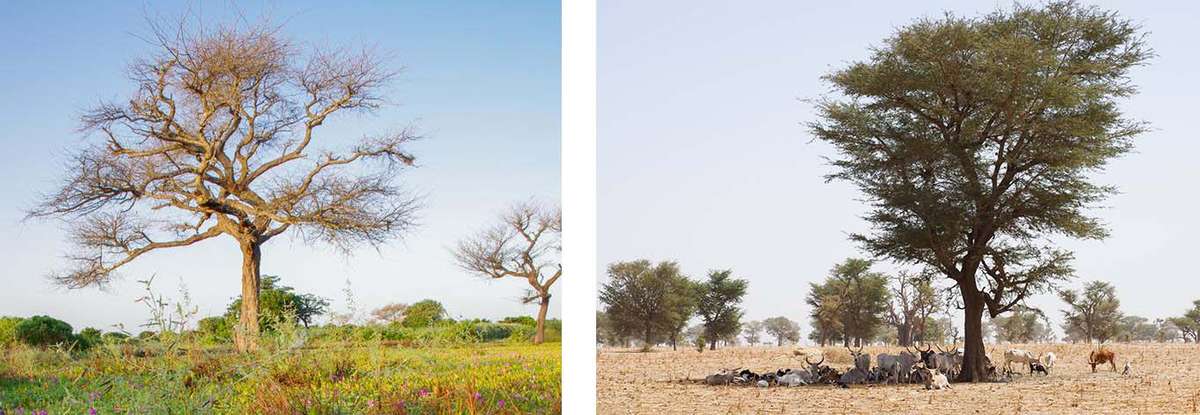
Figure 4. Faidherbia is an important and unique agroforestry tree that sheds leaves in the rainy season (left) and leafs out in the dry season (right). These photos are from Senegal. Source: Noah Elhardt
Crop and livestock insurance
In some countries, affordable index- based crop insurance has been introduced for smallscale farmers. In these arrangements, farmers pay for insurance and receive compensation if weather data indicates conditions that would lead to lower yields or complete loss of particular crops.
Research-based technological innovations
Field-tested methods based on sound research should be emphasized. Look for proven methods to address problems such as insect and disease pests unique to dryland crops. The international agricultural research centers (CGIAR) collaborate with national agricultural research partners in a continuous quest to provide improved resistant varieties to their farmers.
Access to reliable climate/weather information
Farmers need access to accurate weather forecasts as well as data. While it is not yet possible to predict the weather perfectly for the growing season, there is increasingly more and better information available. The more access that the farmer has to accurate information, the better they can make decisions about their crops and livestock. This information includes normal weather reports and conditions as well as early warning systems for famine and catastrophic events. Examples are the Famine Early Warning Systems Network (https://fews.net) and the FAO Locust Watch (http://edn.link/e3ce7q). And as mentioned previously, accurate weather data can be used for low cost, index- based crop insurance.
Improved seed supply
International institutions in collaboration with national agricultural research organizations have collected seeds and developed new varieties of many of the important drought-tolerant crops. Where seeds are available through farm supply stores and government agricultural offices, their use should be encouraged.
Practices
Appropriate Livestock
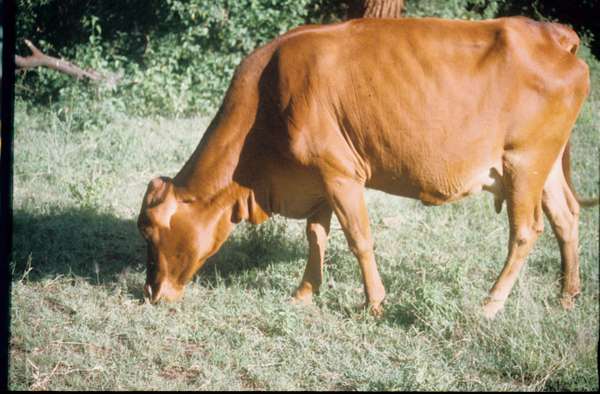
Figure 5. Crossing European dairy breeds (Jersey and Ayrshire) with the dual purpose Sahiwal (a breed of zebu, or humped, cattle) produces a more heat tolerant animal for drier, hotter environments. Source: Bob Hargrave
The most common livestock found in semi-arid areas are camels, cattle, sheep, goats, and donkeys. Around homesteads, chickens are also common. Breeds of cattle, sheep, and goats can be found in many different climate zones, including those that thrive in tropical drylands. Choose breeds that are adapted to hot, dry conditions (Figure 5).
For a more complete treatment of this subject see Assisting Pastoralists (BPN 3) [http://edn.link/bpn3]. In particular from that document:
Facilitate local stock improvement through crossbreeding to infuse improved traits (e.g., animal size, body type or milk-producing capacity) into local animal breeds without losing the resilience of those breeds. Such improvements are advantageous as long as the resulting animals are well-adapted to the local environment. Boran or Sahiwal cattle breeds can be crossed, for instance, with East African short-horn zebu to improve beef and/or milk production under dry conditions. Other animals to consider in crossbreeding efforts include Galla goats (for milk production) and Black-headed Persian sheep (for heat tolerance).
Crop production
Efforts to improve crop production in drylands focus mainly on plant breeding, water, soil improvement, and reducing heat stress and evapotranspiration losses. Check with the local and national agricultural research and extension organization for improved and adapted crops. Many drought tolerant, valuable market crops have been studied and improved at international and national research centers.
The International Crops Research Institute for the Semi-Arid Tropics (ICRISAT), for instance, works with dryland cereals such as pearl millet, small millets, sorghum, and sweet sorghum. They also work with dryland legumes including chickpea, groundnut (peanut), and pigeon pea. The International Center for Agricultural Research in the Dry Areas (ICARDA) works to develop and improve other dryland crops including barley, wheat, faba bean, Kabuli chickpea, and lentils.
Conserving and efficiently using water
The main key to reliable production is to adequately supply water throughout the growing season.
Irrigation
Irrigation systems were in use in Egypt and the Middle East thousands of years ago. These systems involved channels, canals and waterways bringing water to crops from a permanent supply of water or to channel and control water from yearly flooding, especially along the Nile.
More recent systems bring water from deep wells or reservoirs created by dams. Water supply to crops can be through flood irrigation, overhead sprinklers, mini sprinklers, or drip irrigation. In drylands it is important to use the most efficient irrigation method, generally drip irrigation. Drip irrigation systems minimize losses from evaporation and transpiration by providing just the amount of water needed at the precise location needed by the plant.
Rainfed Agriculture
Rainfed agriculture relies entirely on rainfall and water retained in the soil. Floodplain soils naturally retain substantial amounts of water. In fields that are not supplied with water by lakes and rivers, however, it is important to capture and retain as much rainfall as possible. Several techniques can increase the retention of rainwater.
Rainwater harvesting
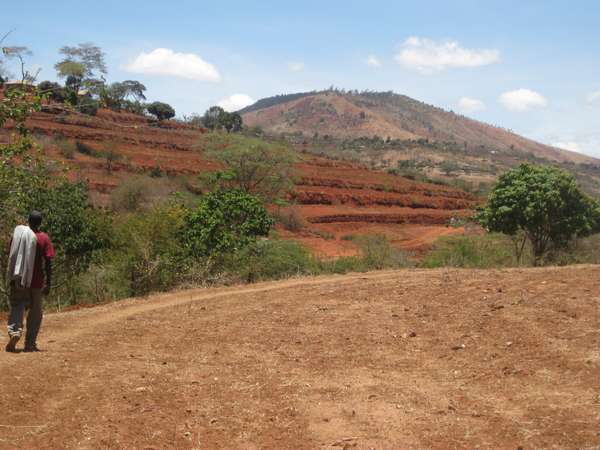
Figure 6. Terraces above a sand dam in Kenya. Source: Bob Hargrave
Harvesting rainwater involves slowing runoff, reducing evaporation, and increasing water storage capacity. Degraded soil can be improved to hold more water by increasing soil organic matter. Lancaster (2010 and 2013) mentions the following methods to slow runoff on slopes:
- Terraces
- Tied ridges
- Stone lines
- Micro-catchments
- Demi-lunes
Terraces (Figure 6) and stone lines are barriers along slope contours that slow runoff. Tied ridges, also established along contours, capture water in furrows with plants grown on ridges made to create the furrows. Demi-lunes (half-moons) are semi-circular rock bunds approximately 1 m in radius with the open side facing uphill.
Micro-catchments are small basins that hold water, concentrating moisture near crop plants seeded into the basins. Technical Note (TN) 78 Zai Pit System [http://edn.link/tn-78].
Rainwater Storage
Rainwater storage can be increased through the use of tanks, cisterns, retention ponds and sand dams (see Water Harvesting through Sand Dams (TN 70) [http://edn.link/tn70]). Techniques used to harvest and store water can provide supplemental irrigation for rainfed crops which reduces the risk of growing valuable crops in marginal areas.
Shade
Heat stress and evapotranspiration losses can be reduced by growing crops in partial shade. For high value crops shade cloth may be feasible. In rainfed fields interspersed trees such as Faidherbia albida (Figure 4) and Gliricidia sepium are effective at providing shade for crops.
Mulching
Where enough biomass or other material is available and affordable, the soil should be covered to slow evaporation and lower soil temperature. Mulch can also protect soil from heavy rainfall. This is an important component of Conservation Agriculture.
Systems for improving water retention
In the drylands it is estimated that 95% of the agricultural production is from rainfed agriculture (FAO, 2002) These are some of the practices that have proven effective in maximizing the availability and use of limited rainfall. Note that they also improve soil health.
- From Conservation Agriculture -- BPN 6 [http://edn.link/bpn-6]
Conservation agriculture (CA) is a resource-saving land management approach that optimizes and sustains the capacity of soils to produce food. In CA, sustainability is linked to the ecological preservation of agricultural landscapes. This is achieved through 1) minimal soil disturbance, 2) keeping soils covered, and 3) crop diversification. Implementing these three elements requires a combination of practices, for which there are many options. Thinking of CA as an overall system, rather than a fixed set of techniques, gives farmers and practitioners the freedom to evaluate and adopt a set of CA-related practices appropriate to local needs.
- From Zai holes -- TN 78 [http://edn.link/tn-78]
“Zai” is a term that farmers in northern Burkina Faso use to refer to small planting pits that typically measure 20-30 cm in width, are 10-20 cm deep and spaced 60-80 cm apart. In the Tahoua region of Niger, the haussa word “tassa” is used. English terms used to describe zai pits include “planting pockets”, “planting basins”, “micro pits” and “small water harvesting pits.” Seeds are sown into the pits after filling them with one to three handfuls of organic material such as manure, compost, or dry plant biomass.
- Farmer Managed Natural Regeneration -- FMNR is the intentional and systematic management of trees and shrubs that are sprouting from stumps left behind after land was cleared for crops (Rinaudo, 2010).
Crops for the Drylands
Though dry conditions make it difficult to grow many crops, there are still a number of crops that can be grown in dry regions. A few noteworthy crop options are highlighted in Tables 1 - 4 below.
Grains
| Crop | Noteworthy facts | ECHO resources with more information |
|---|---|---|
| Maize (Zea mays) | Farmers in dryland areas are often willing to risk growing maize in favor of more drought-tolerant grains, due to the high value of maize | ECHOcommunity collection -- http://edn.link/collection-maize |
| Sorghum (Sorghum bicolor) | Sorghum will grow in a wide range of environments, including hot, dry climates (ICRISAT, n.d.(e)). It is much more tolerant of dry spells during crop development than maize. Over 500 million people depend on sorghum for their livelihood. | ECHOcommunity collection -- http://edn.link/collection-sorghum |
| Pearl millet (Pennisetum glaucum) | (ICRISAT, n.d.(c)) reported that “Pearl millet is a dependable nutritious source of food for millions in marginal agricultural areas. It is the world’s hardiest warm-season cereal crop. It can survive and produce grain even on the least fertile soils in the driest regions, on highly acidic and saline soils, and in the hottest climates.” Pearl millet is useful as an intercrop with legumes and sometimes sorghum or maize. | ECHOcommunity collection -- http://edn.link/collection-millet |
| Finger millet (Eleusine coracana) | Finger millet and other small millets are very nutritious and tolerant of drought and poor soils. They are very important cereal crops for marginal environments. (ICRISAT, n.d.(f)) | ECHOcommunity collection -- http://edn.link/collection-millet |
| Grain amaranth (Amaranthus sp.) | Grain amaranth is not actually a true cereal, but an herbaceous annual with nutritious grain. It, along with quinoa, is considered a “pseudo-cereal” because it is used as a grain but is not a monocot. The grain has more of the amino acid lysine than true grains and is thus a more complete protein. It is relatively drought tolerant and provides a good option for diversifying grain crops. | ECHOcommunity collection -- http://edn.link/amaranth |
Legumes
Food legumes are an important source of protein. Most food legumes are also multi-purpose crops, useful for fodder as well as green manure/cover crops for soil improvement. Legumes are capable of adding nitrogen to the soil through a process called nitrogen fixation in which atmospheric nitrogen is converted to nitrogen that plants can use. Thus, many legumes are integrated with staple grains, using strategies such as intercropping and relay cropping (Morton and Poehlman, 1982; ECHO Staff 2016 [http://edn.link/bpn6] and 2017 [http://edn.link/bpn7]).
| Crop | Noteworthy facts | ECHO resources with more information |
|---|---|---|
| Groundnut (peanut) (Arachis hypogaea) |
Groundnuts are a very important legume in drylands worldwide, although production will be limited when grown under rainfed conditions in marginal areas. They are high in protein and can be processed for oil. Groundnuts are highly susceptible to infection by fungi which can produce aflatoxin. Aflatoxin is a serious threat to human health, especially young children (Dowell, 2016). | ECHOcommunity collection -- http://edn.link/collection-peanut |
| Pigeon pea (Cajanus cajan) | Pigeon pea is one of the most remarkable and useful crops for drylands. It is grown by millions of farmers and produces an edible seed that is an excellent source of protein. It is a perennial and can also be grown as a short-lived annual that can produce multiple crops. Pigeon pea works well as an intercrop with sorghum and millet, adding needed nitrogen and organic matter to the soil. | ECHOcommunity collection -- http://edn.link/collection-pigeonpea |
| Soybeans (Glycine max) | Early-maturing varieties of soybean can be grown in the drylands that have a sufficient rainy season. Soybeans are an important food and cash crop. | ECHOcommunity collection -- http://edn.link/collection-soybeans |
| Cowpeas (Vigna unguiculata) | Cowpeas are one of the most important dryland crops. The seeds are high in protein, young leaves and pods are edible, and the plant is good livestock fodder. Cowpeas can provide significant quantities of organic matter and plant nutrients when used as a green manure/cover crop or intercrop. | ECHOcommunity collection -- http://edn.link/collection-cowpea |
| Chickpeas (Cicer arietinum) | Chickpea is an important drought tolerant, cool season crop that has been cultivated and used by humans for thousands of years. [ICRISAT, n.d.(a)] | ECHOcommunity collection -- http://edn.link/collection-chickpea |
| Lentils (Lens esculenta) | Lentils are one of the oldest legume crops cultivated and a nutritious legume for the drylands. Lentils do best in highland areas, as they prefer cool temperatures. | ECHO plant information sheet -- http://edn.link/plant-lentils |
| Tepary beans (Phaseolus acutifolius) | Tepary beans are drought tolerant and well adapted to very hot and dry climates. A crop can be produced in about 45 days on residual moisture in dry stream beds, enabling them to evade droughts. The beans are nutritious and used in the same way as common beans. | ECHO plant information sheet -- http://edn.link/plant-teparybean |
| Lablab beans (Lablab purpureus) | Lablab beans are an excellent multipurpose legume for drylands, producing both edible seeds and abundant vegetation for forage and soil improvement. | ECHOcommunity collection -- http://edn.link/lablab |
| Green grams or Mung beans (Vigna radiata) | Green grams or mung beans are a quick maturing, drought tolerant crop producing nutritious seeds. | ECHO plant information sheet -- http://edn.link/plant-mungbean EDN article -- http://edn.link/article-greengram |
| Faba beans (Vicia faba) | Faba beans are adapted to Mediterranean climates as well as higher altitudes in the tropics. There are many varieties and some are more drought tolerant than others. | ECHOcommunity collection -- http://edn.link/collection-faba |
| Bambara groundnuts (Vigna subterranea) | Bambara groundnuts are nutritous and highly drought tolerant (Heller et al., 1977). This crop is underutilized with significant potential for improving food security in drylands. | ECHO plant information sheet -- http://edn.link/plant-bambaragroundnut |
| Jack beans (Canavalia ensiformis) | Jack bean is known for its drought tolerance and is useful for soil improvement in the driest, degraded soils. | ECHOcommunity collection -- http://edn.link/jackbean |
| Tephrosia (Tephrosia vogelii) | Tephrosia (fish bean) is a short-lived perennial, somewhat woody plant growing up to 3 m in height. It is used for erosion control in addition to soil improvement. Tephrosia seeds contain substances with toxicity against insects, but they should NOT be fed to animals. | ECHO plant information sheet -- http://edn.link/plant-tephrosia |
| Velvetbean (Mucuna pruriens) | Velvetbean is one of the best green manure/cover crops, producing vigorous, abundant vines and foliage. They will not grow well in very dry areas but have potential for sub-humid drylands. The mass of their vines and foliage cover and suppress most of the weeds normally found in a fallow field. | ECHOcommunity collection -- http://edn.link/velvetbean |
Vegetables
Vegetables are important for nutrition and income. Some, like tomatoes, require special care while others, in particular indigenous vegetables, are suited to rainfed dryland conditions. In the right locations market vegetables can justify the extra expense and labor needed to produce a quality product.
| Crop | Noteworthy facts | ECHO resources with more information |
|---|---|---|
| Eggplant (Solanum melongena) | Eggplant is a popular solanaceous garden vegetable grown for its edible fruit. There are many varieties of this strong upright plant. | ECHOcommunity collection -- http://edn.link/collection-eggplant |
| Okra (Abelmoschus esculentus) | Okra is a resilient, nutritious vegetable that originated in dry Africa. It prefers hot temperatures but does require plenty of water. | ECHOcommunity collection -- http://edn.link/collection-okra |
| Tropical pumpkins (Cucurbita moschata) | Tropical pumpkins are very well adapted to hot, humid conditions so are best suited to the sub-humid drylands. The ripe fruits can be stored for months or even a year under dry, well ventilated storage conditions. | ECHO plant information sheet -- http://edn.link/plant-tropicalpumpkin ECHO Research Note -- http://edn.link/rn6 |
| Indigenous | Indigenous (naturally occurring) and traditional (introduced in the past and incorporated into the culture) leafy vegetables are often greatly underutilized. Leafy vegetables are important sources of vitamins A and C, iron and other nutrients and can be readily incorporated as supplements to carbohydrate-based staples. | ECHOcommunity collection -- http://edn.link/ifp |
Fruit trees
| Crop | Noteworthy facts | ECHO resources with more information | |
|---|---|---|---|
| Tamarind (Tamarindus indica) | Tamarind is an attractive, evergreen, nitrogen fixing tree, growing to 30 m in height, and best adapted to semi-arid conditions. The sweet-tart pulp from the pod is eaten fresh, used as an ingredient in cooking, or made into a refreshing drink. | ECHO plant information sheet -- http://edn.link/plant-tamarind | |
| Indian jujube (Ziziphus mauritiana) | Indian jujube is a hardy tree that copes with extreme temperatures and thrives under rather dry conditions, as well as salinity, drought, and waterlogged soil. Fruit quality is best under hot, sunny and dry conditions, but there should be a rainy season to support growth and flowering. | ECHO plant information sheet -- http://edn.link/plant-indianjujube | |
| Mango (Mangifera indica) | Mangoes are very popular tropical fruits that require a reliable rainy season and a long dry season to produce well. In favorable conditions the trees can produce for over 100 years. | ECHOcommunity collection -- http://edn.link/mango | |
| Baobab (Adansonia digitata) | Baobab trees are large, robust trees that originate from Africa and are found in arid to semi-arid areas. The trees typically grow up to 20-30 m tall with a diameter of 2-10 m. The tree is used for food, fodder, shelter, and shade. Baobab trees typically grow as solitary individuals and are pollinated by fruit bats. | ECHOcommunity collection -- http://edn.link/collection-baobab |
Other enterprises for nutrition and income in drylands
Gardens
Where people have permanent, secure residences and access to a water supply there is the opportunity for dooryard or kitchen gardens. Gardens can produce supplemental food for the family and the excess can be sold at the garden gate or local markets. There are a number of ideas and plans for gardening in small spaces (FAO, 2001).
Industrial Crops
A few other crops are important sources of income in some dryand areas. These include cotton (Gossypium hirsutum), sunflower (Helianthus annuus), sesame (Sesamum indicum), gum arabic (Senegalia senegal), frankincense (Boswellia sacra), myrrh (Commiphora sp.), and sisal (Agave sisilana)
Final Thoughts
Investment in projects that restore ecosystems and lead to enhanced economic opportunities can benefit a nation. Some examples are Farmer Managed Natural Regeneration, infrastructure that allows access to markets, index based crop and livestock insurance, development of renewable energy, and ecotourism.
Saline soils occur in some dryland areas and present unique challenges. See Understanding Salt-Affected Soils (TN 84) [http://edn.link/tn84] for a more complete treatment on these soils.
The national agricultural research institutions are usually connected with extension services that provide information appropriate for the local conditions. The local government agricultural agent is a good place to start for advice. In addition there are many NGOs and aid projects providing information to farmers. For organizations in your region see the Global Forum for Rural Advisory Services (http://edn.link/gfras).
Resources
ECHO Publications
Improving Degraded Land (BPN 1; http://edn.link/bpn1)
Assisting Pastoralists (BPN 3; http://edn.link/bpn3)
Conservation Agriculture (BPN 6; http://edn.link/bpn6)
Selecting Legumes as Green Manure/Cover Crops (BPN 7; http://edn.link/bpn7)
Farmer Managed Natural Regeneration (TN 65; http://edn.link/tn65)
The Zai Pit System (TN 78; http://edn.link/tn78)
Green Manure Crops (TN 10; http://edn.link/tn10)
Selecting the Best Plants for the Tropical Subsistence Farm (TN 20; http://edn.link/tn20)
Chaya (TN 53; http://edn.link/tn53)
Pigeon Pea (TN 21; http://edn.link/tn21)
Agroforestry Principles (TN 25; http://edn.link/tn25)
Acid Soils of the Tropics (TN 48; http://edn.link/tn48)
An Introduction to Soil Fertility (TN 57; http://edn.link/tn57)
The Farmer Managed Agroforestry Farming System (TN 60; http://edn.link/tn60)
Water Harvesting Through Sand Dams (TN 70; http://edn.link/tn70)
Lablab (Lablab purpureus) New Staple Crop for the Sudano Sahel (TN 73; http://edn.link/tn73)
Understanding Salt-Affected Soils (TN 84; http://edn.link/tn84)
Underutilized Crops for Small Farm Abundance (TN 91; http://edn.link/91)
100-Fold Vegetable Gardens with Low-Cost Wicking Beds (TN 95; http://edn.link/tn95)
Faidherbia albida (EDN 108; http://edn.link/ddq7kd)
A Combination of Approaches to Conserve Soil and Water (EAN 2; http://edn.link/wg6q6c)
Conservation Agriculture in East Africa (EAN 1; http://edn.link/eanca)
Other Resources
International Agricultural Research
- Two of the CGIAR international research centers focus on semi-arid and arid lands.
- ICRISAT (International Crops Research Institute for the Semi-Arid Tropics) conducts research and crop improvement with chickpea, pigeonpea, pearl millet, sorghum and groundnut [https://www.icrisat.org/].
- ICARDA (International Center for Agricultural Research in the Dry Areas) focuses on a broad range of subjects including climate-resilient crops and livestock, water-saving technologies, sustainable agronomic practices, integrated crop-livestock farming systems, and diversified production and value chains [https://www.icarda.org/].
- National agricultural research institutions: Most countries have national agricultural research institutions that conduct research and promote crops, livestock and systems appropriate for their situations.
Rowland, J.R.J. (editor). 1993. Dryland Farming in Africa. Macmillan Education Ltd. London and Basingstoke.
Cite as:
Hargrave, B. 2021. Best Practices for Tropical Dryland Agriculture. ECHO Best Practice Note No. 8.
References
Dowell, F.E. 2016. Detecting Aflatoxin in Agricultural Commodities. ECHO Development Notes no. 132.
ECHO Staff. 2016. Conservation Agriculture. ECHO Best Practice Note no. 6.
ECHO Staff. 2017. Selecting Legumes as Green Manure/Cover Crops. ECHO Best Practice Note no. 7.
FAO, n.d. Crop evapotranspiration - Guidelines for computing crop water requirements - FAO Irrigation and drainage paper 56, Chapter 1 “Introduction to Evapotranspiration.” http://www.fao.org/3/x0490e/x0490e04.htm Accessed 16 April 2021.
FAO, 2002. Crops and Drops http://www.fao.org/3/y3918e/y3918e10.htm Accessed 16 April 2021.
FAO, 2001. Improving Nutrition Through Home Gardening A Training Package For Preparing Field Workers In Africa. http://www.fao.org/3/X3996E/X3996E00.htm Accessed 30 April 2021.
Heller, J., F. Begmann, and J. Mushonga. 1977. “Bambara groundnut”. IPGRI, Rome.
ICRISAT. n.d. (a) Chickpea. http://exploreit.icrisat.org/profile/Chickpea/232 Accessed 16 Aril 2021.
ICRISAT. n. d. (b) Climate Change and Dryland Stresses. http:
ICRISAT, n.d. (c) Pearl Millet. http://exploreit.icrisat.org/profile/Pearl%20Millet/178 Accessed 16 April 2021.
ICRISAT, n.d. (d) Policy and Institutions. http:
ICRISAT, n.d. (e) Sorghum. http://exploreit.icrisat.org/profile/Sorghum/193 Accessed 16 April 2021.
ICRISAT, n.d. (f) Small Millets” http:
Lancaster, B. 2010. Rainwater Harvesting for Drylands and Beyond. Volume 2. Rainsource Press.
Lancaster, B. 2013. Rainwater Harvesting for Drylands and Beyond. Volume 1. Rainsource Press.
Marvel, K., B.I. Cook, C.J.W. Bonfils, P.J. Durack, J.E. Smerdon, and A.P. Williams. 2019. Twentieth-century hydroclimate changes consistent with human influence. Nature 569, 59–65.
McHugh, T. A., E.M. Morrissey, S.C. Reed, B.A. Hungate, and E. Schwartz. 2015. Water from air: an overlooked source of moisture in arid and semiarid regions. Sci. Rep. 5, 13767; doi: 10.1038/srep13767.
Middleton, N. and D. Thomas. 1997. World atlas of desertification (2nd edition). Arnold, Hodder Headline, PLC.
Morton, S. and J.M. Poehlman. 1982. The Mungbean. University of Puerto Rico, Mayaguez campus.
Rinaudo, T. 2010. Farmer Managed Natural Regeneration (FMNR). ECHO Technical Note no. 65.
United Nations Environment Management Group, “Global Drylands: A UN system-wide response.” 2011. https: